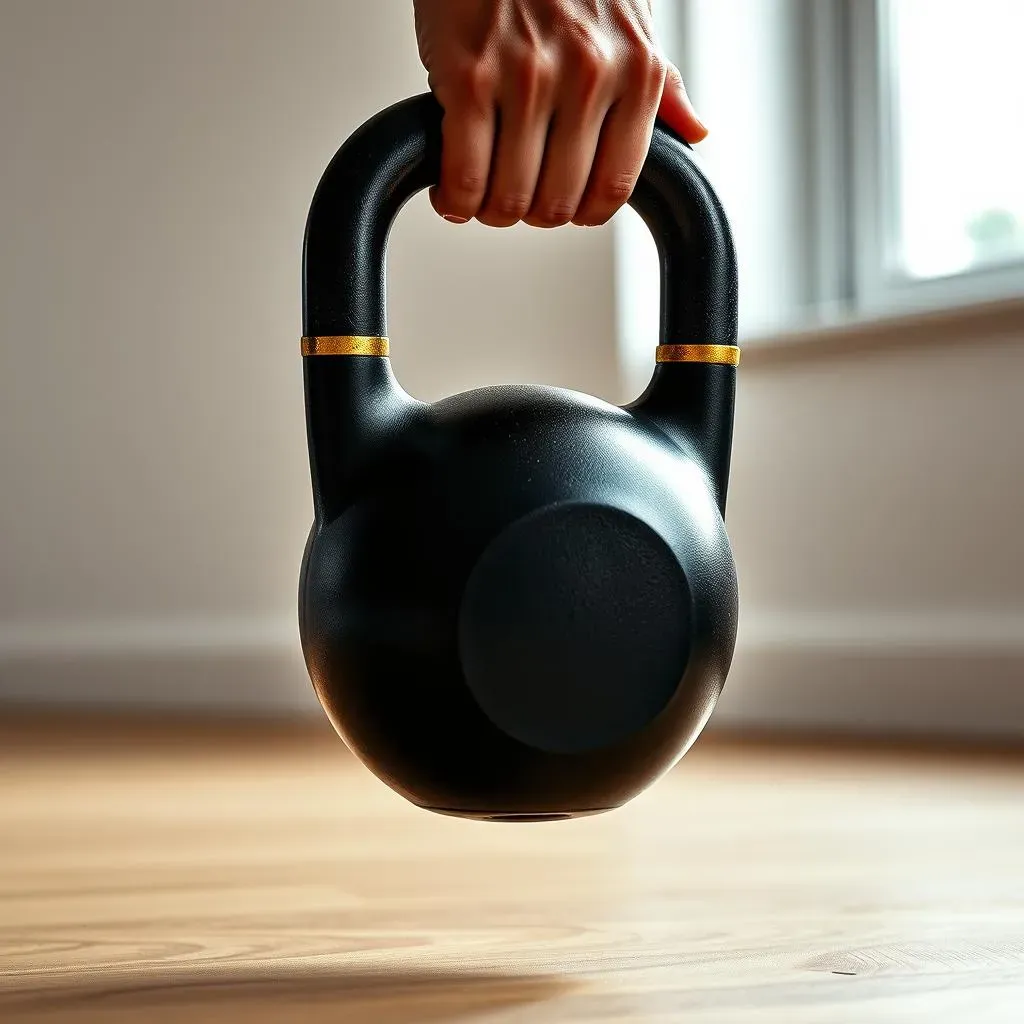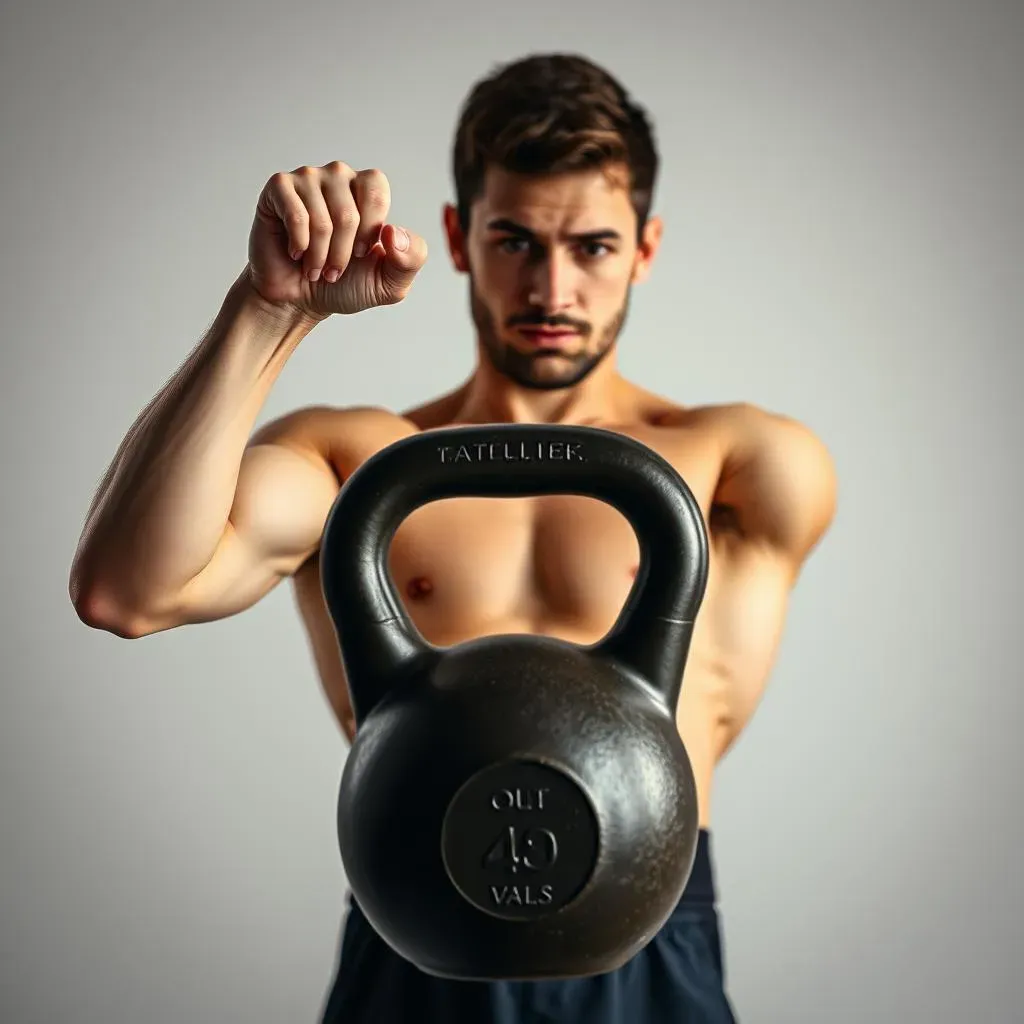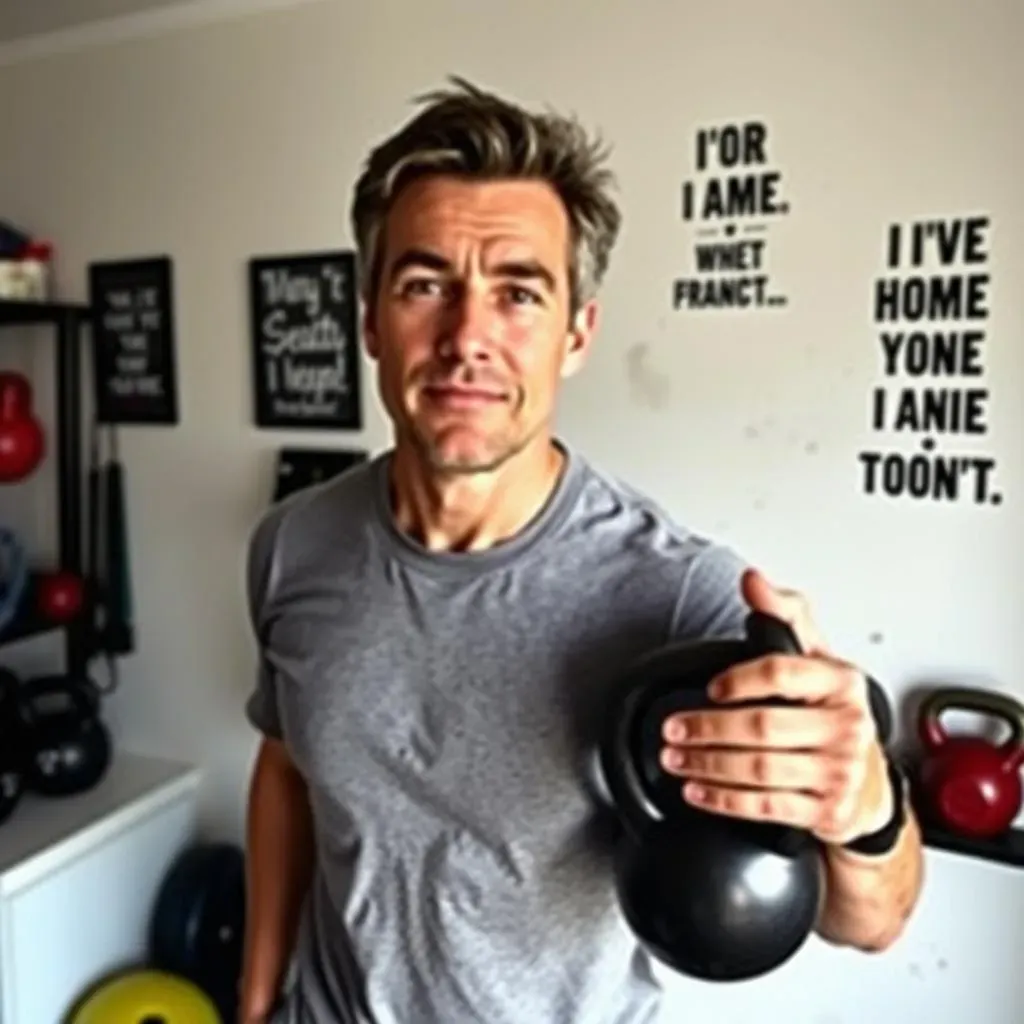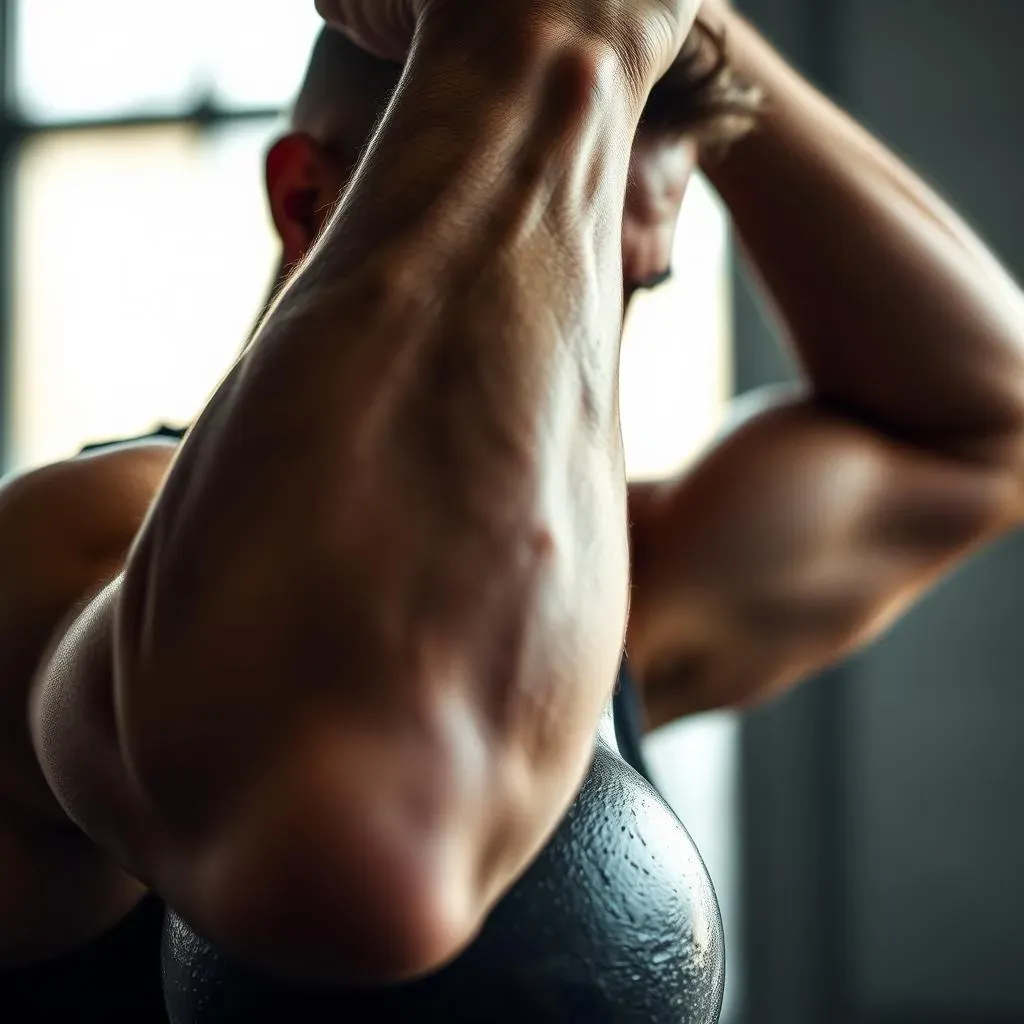Table of Contents
Are you ready to pump up those arms? Forget boring curls; it's time to grab a kettlebell! This isn't just another workout; it's a transformation. We're diving into the world of biceps workout kettlebells, where simple moves can lead to serious gains. If you've ever wondered if kettlebells are just for swings and squats, prepare to be surprised. We'll explore why these cannonball-shaped weights are fantastic for building biceps, revealing how they engage your muscles in ways dumbbells can't. Get ready to discover specific kettlebell exercises that target your biceps like never before, and learn how to craft a workout routine that fits your fitness goals. Plus, we'll share our best tips to ensure you're not just lifting but also maximizing every single rep. So, let’s get started and sculpt those arms!
Why Kettlebells Are Great for Biceps Workouts

Why Kettlebells Are Great for Biceps Workouts
The Unique Challenge of Kettlebells
so you're probably thinking, "Biceps? With kettlebells?" I get it. It's not the first thing that comes to mind. But that's the beauty of it! Kettlebells aren't like your standard dumbbells. Their off-center weight distribution forces your muscles to work harder to stabilize the weight, and that includes your biceps. This means that even simple curls become a full-body engagement, not just an arm exercise. Forget about isolating your biceps; kettlebells bring them into the party, making them work in a more functional and natural way.
Think of it like this: a dumbbell is like a perfectly balanced teacup. A kettlebell is like a teacup with a rock tied to the side. Which one is harder to hold steady? The kettlebell, obviously! This extra challenge is exactly what makes them so effective for building strength and size in your biceps. The constant battle against the swinging weight recruits more muscle fibers, resulting in greater muscle activation and, ultimately, better results. It's not just about lifting; it's about controlling and stabilizing, which adds a whole new dimension to your workout.
Beyond Basic Curls
It's not just about the extra challenge; it's also about the variety. Kettlebells allow for a range of motion that dumbbells simply can't match. With kettlebells, you can do curls, but you can also perform hammer curls, concentration curls, and even ballistic curls, all with a slightly different feel and muscle engagement. This keeps your muscles guessing and prevents plateaus, ensuring that your biceps continue to grow and get stronger. This variety is key for making progress and preventing boredom.
Plus, the way you hold the kettlebell changes how your muscles work. Unlike the fixed grip of a dumbbell, a kettlebell's handle allows for a more natural hand position, which can reduce strain on your wrists and elbows. This means you can focus on your biceps without worrying about joint pain. It’s all about working smarter, not just harder. Kettlebells aren't just a tool; they're a dynamic partner in your fitness journey.
Benefit | Description |
|---|---|
Increased Muscle Activation | Off-center weight forces stabilizer muscles to work harder |
Greater Range of Motion | Allows for diverse exercises beyond basic curls |
Reduced Joint Strain | Natural grip reduces wrist and elbow discomfort |
Top Kettlebell Exercises for Biceps Growth

Top Kettlebell Exercises for Biceps Growth
The Kettlebell Curl
let's talk exercises. First up, the classic kettlebell curl. It's just like a dumbbell curl, but with that delightful kettlebell twist. Stand with your feet shoulder-width apart, hold a kettlebell in one hand, and let it hang down. Now, curl the kettlebell up towards your shoulder, keeping your elbow tucked in. The trick here is to control the movement. Don't just swing the weight; feel your bicep working on the way up and the way down. This isn’t just about lifting heavy; it’s about building a solid mind-muscle connection.
I remember when I first tried these, I was all over the place. The kettlebell felt awkward, like it was trying to escape my grip. But with practice, I learned to stabilize and control it, and that’s when I really started to feel the burn in my biceps. It’s a humbling exercise, but incredibly effective. Start with a lighter weight, focus on the form, and gradually increase the weight as you get stronger. Remember, it's not a race; it's a steady journey of strength building.
Hammer Curl Variation
Next, we have the hammer curl, a variation that hits different parts of your bicep, including the brachialis muscle. This is where the grip changes slightly. Instead of turning your palm up, keep it facing your body, like you're holding a hammer. Then, curl the kettlebell up. This movement targets the outer part of your bicep, adding thickness and overall arm development. It might feel a bit different at first, but you'll quickly appreciate how it rounds out your arm workout.
I love hammer curls because they make your arms look powerful and balanced. They're not just about aesthetics, though; they also improve your grip strength, which is essential for many other exercises. It’s like getting two benefits in one exercise. If you’re looking to develop those peaky biceps, hammer curls are your secret weapon. Don't underestimate the power of this simple tweak; it can make a world of difference in your overall arm growth.
- Control the movement, no swinging.
- Keep your elbows tucked in.
- Feel the bicep working both up and down.
Concentration Curl
Now, let’s isolate those biceps with the concentration curl. Sit on a bench with your legs spread, and lean forward slightly. Place your elbow on the inside of your thigh, and let the kettlebell hang towards the floor. Now, curl the kettlebell up, focusing all the tension on your bicep. This exercise minimizes momentum and forces your bicep to do all the work. I like to call this one the "laser focus" exercise because it really makes you concentrate on the muscle.
I used to skip concentration curls, thinking they weren't as effective as standing curls. Boy, was I wrong! They provide an intense pump and help you really feel your biceps working. It’s a great way to finish off your workout and ensure you’ve hit every possible muscle fiber. It’s also a fantastic way to improve your mind-muscle connection, which is crucial for long-term growth. Give concentration curls a try, and you’ll see what I mean. You might just find a new favorite exercise.
Crafting Your Kettlebell Biceps Workout Routine

Crafting Your Kettlebell Biceps Workout Routine
Setting Up Your Routine
Alright, so you've got the exercises down; now, how do we put them together? It's not about randomly throwing kettlebells around. A good routine needs structure. Start by thinking about your fitness level. Are you a newbie? Then, stick to 2-3 sets of 8-12 reps for each exercise. If you're more experienced, bump it up to 3-4 sets of 10-15 reps. The key is to listen to your body. Don’t try to lift like a superhero on day one. It’s a marathon, not a sprint.
I usually like to start with the classic kettlebell curl, then move onto hammer curls, and finish with concentration curls. This way, I’m hitting my biceps from different angles. Make sure to give your biceps adequate rest between sets, usually about 60-90 seconds. This will help your muscles recover and get ready for the next set. Remember, consistency is key. Aim for 2-3 biceps workouts per week, with at least a day of rest in between. This allows your muscles to repair and grow stronger. No need to overdo it; your biceps will thank you for the rest.
Sample Workout Plan
Let's break it down into a sample workout plan. First, warm-up with 5-10 minutes of light cardio, like jumping jacks or arm circles. This gets your blood flowing and prepares your muscles for the work ahead. Then, move onto your kettlebell exercises. Start with kettlebell curls (3 sets of 10 reps), followed by hammer curls (3 sets of 10 reps), and finish with concentration curls (3 sets of 12 reps). Remember, quality over quantity. Focus on maintaining good form, even if it means using a lighter weight. That's how you get the best results.
After your workout, don't forget to cool down and stretch your biceps. This helps improve flexibility and reduces muscle soreness. I usually hold each stretch for about 30 seconds. A good stretch can make a world of difference in how you feel the next day. Also, don’t forget to hydrate. Water is your best friend during and after a workout. It helps your muscles recover and prevents dehydration. Think of your workout like a well-planned project; each step is important for the overall success.
Exercise | Sets | Reps | Rest |
|---|---|---|---|
Kettlebell Curls | 3 | 10 | 60-90 seconds |
Hammer Curls | 3 | 10 | 60-90 seconds |
Concentration Curls | 3 | 12 | 60-90 seconds |
Adjusting and Progressing
Now, here’s the thing about workouts: they’re not static. Your body adapts quickly, so you need to keep challenging it. Once your current routine feels easy, it’s time to make adjustments. This could mean increasing the weight of your kettlebells, adding more reps or sets, or shortening your rest periods. You can also try adding new variations of the exercises. For example, you could try doing the curls with a different grip or tempo. The goal is to keep your muscles guessing and prevent plateaus.
I like to think of my workout routine as a journey of constant improvement. It’s not about getting to a certain point and stopping. It’s about pushing your limits and continuously striving for better. Tracking your progress is also really important. Keep a log of your workouts, noting the weights, reps, and sets you’ve done. This way, you can see how far you’ve come and identify areas where you need to improve. It's all about making small, incremental changes that lead to big results over time. Remember, it’s your journey, so make it your own.
Tips for Maximizing Your Biceps Workout with Kettlebells

Tips for Maximizing Your Biceps Workout with Kettlebells
Mastering the Mind-Muscle Connection
let's talk about the secret sauce – the mind-muscle connection. It's not just about lifting a weight; it's about feeling your biceps working every single rep. When you're curling that kettlebell, don't just go through the motions. Focus on squeezing your bicep at the top of the movement and controlling the weight on the way down. This connection makes a huge difference in how effective your workout is. Think of it like you're talking to your bicep, telling it to grow. It sounds a bit silly, but trust me, it works!
I used to just heave the kettlebell up and down, and I was wondering why my biceps weren't growing. Then, I started focusing on feeling the muscle contract, and that's when things really changed. It's like having a conversation with your muscles. If you're not feeling the burn, you're probably not doing it right. So, slow down, focus, and really feel those biceps working. It’s not about the weight you lift; it's about how you lift it. This is where real gains happen.
The Importance of Progressive Overload
Next up, progressive overload. This fancy term just means you need to keep challenging your muscles to keep growing. Your body is like a smart machine; it adapts to what you throw at it. If you keep lifting the same weight, doing the same reps, your biceps will eventually stop growing. The key here is to gradually increase the challenge over time. This could mean lifting heavier weights, doing more reps, or adding more sets. It’s like climbing a ladder; you have to keep going higher to reach the top.
I remember when I first started, I was so proud of lifting a 10kg kettlebell. But then, I stopped progressing, and my biceps stayed the same. It was only when I started gradually increasing the weight that I saw real growth. The point is that you cannot get comfortable. Don’t be afraid to push your limits; that’s where the magic happens. But do it slowly and safely. Don’t try to jump from 10kg to 20kg overnight. This is a marathon, not a sprint. It's about consistent, gradual progress, not sudden jumps.
Tip | Description |
|---|---|
Mind-Muscle Connection | Focus on feeling your bicep work during each rep |
Progressive Overload | Gradually increase weight, reps, or sets over time |
Wrapping Up Your Kettlebell Biceps Journey
So, there you have it—a complete guide to building bigger, stronger biceps with kettlebells. We've explored why kettlebells are fantastic for biceps, covered some killer exercises, and shown you how to put it all together. Remember, consistency is key. Don't expect overnight miracles; it takes time and effort to see results. But with the right exercises, a solid routine, and dedication, you'll be well on your way to achieving the biceps you've always wanted. Now go grab that kettlebell and make it happen. And who knows, maybe you'll even start enjoying arm day. Just kidding, maybe not, but you'll definitely see the gains.